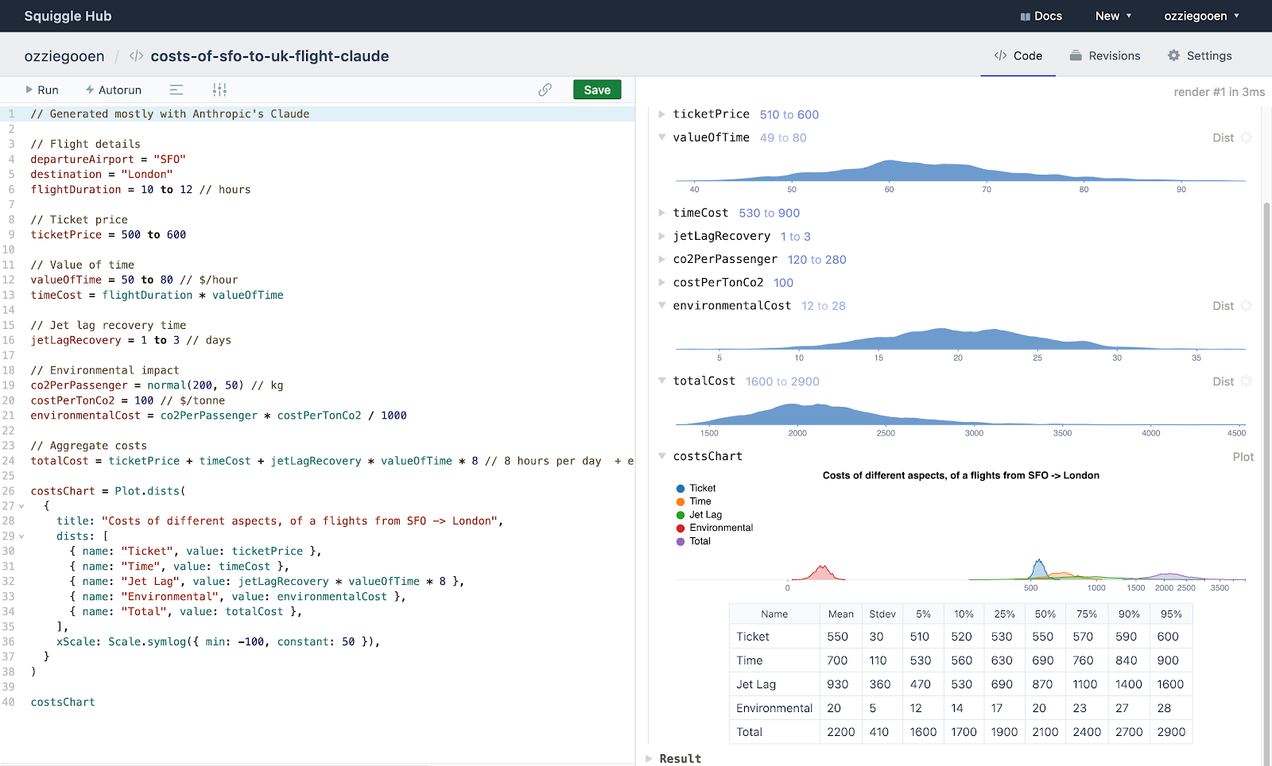Squiggle
Squiggle 0.10.0
After a six-month development period, we’ve released Squiggle 0.10.0. This version introduces important architectural improvements like more robust support for multi-model projects and two new kinds of compile-time type checks. These improvements will be particularly beneficial as laying a foundation for future updates. This release also includes
Squiggle 0.8.6 -> 0.9.2
Tags, decorators, UI updates, and major documentation improvements
Squiggle 0.8.6
Calculators, and standard library improvements, and experimental imports
Open Technical Challenges around Probabilistic Programs and Javascript
While working on Squiggle, we’ve encountered many technical challenges in writing probabilistic functionality with Javascript. Some of these challenges are solved in Python and must be ported over, and some apply to all languages. We think the following tasks could be good fits for others to tackle. These are
Squiggle 0.8.4
Private Models and UI improvements
Announcing Squiggle Hub
A free new platform for writing and sharing Squiggle code
Squiggle 0.8
A much better editor and viewer, function annotations, and lots more
Squiggle: Technical Overview (2020)
This post was originally published on Nov 2020, on LessWrong. We’re moving this document here, to centralize our writing in one place. This piece is meant to be read after Squiggle: An Overview . It includes technical information I thought best separated out for readers familiar with coding. As such,
Squiggle Overview (2020)
This post was originally published on Nov 2020, on LessWrong. We’re moving this document here, to centralize our writing in one place. I’ve spent a fair bit of time over the last several years iterating on a text-based probability distribution editor (the 5 to 10 input editor in
The Squiggly language (Short Presentation, 2020)
A short presentation from 2020 about a very early version of Squiggle
Relative values for animal suffering and ACE Top Charities
tl;dr: I present relative estimates for animal suffering and 2022 top Animal Charity Evaluators (ACE) charities. I am doing this to showcase a new tool from the Quantified Uncertainty Research Institute (QURI) and to present an alternative to ACE’s current rubric-based approach. Introduction and goals At QURI, we’
Squiggle 0.7.0
New functions, ESM Modules, a better Playground editor, several fixes

